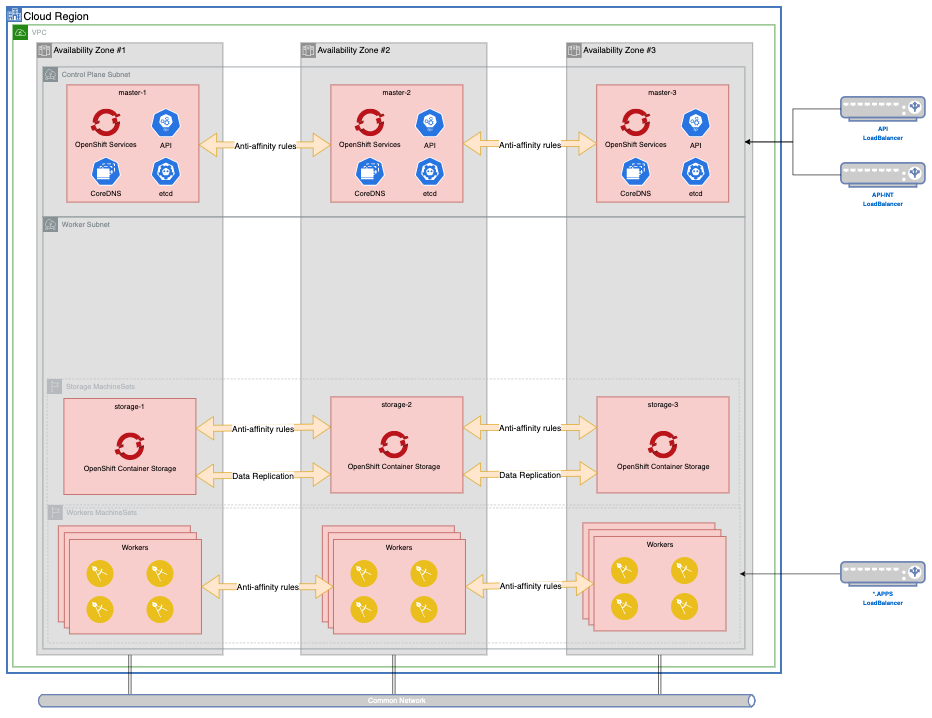AD05 - Storage¶
< Back to architecture decision registry
Storage¶
| Subject Area: |
|---|
| Topology |
Issue or Problem Statement¶
When deploying CloudPak workloads on top of OpenShift, some components may require a storage class that provides ReadWriteMany (RWX) access mode: that is, a PersistentVolumeClaim (PVC) that can be mounted on multiple pods. By default, OpenShift cluster only provide storage classes with ReadWriteOnce (RWO) access modes. The use of OpenShift Container Storage/OpenShift Data Foundation is the recommended storage solution to provide a consistent hybrid story across all CloudPak components and Cloud Providers.
Givens & Assumptions¶
- Your workload components require a
ReadWriteManyorObjectBucketPVC. - Your cloud provider does not support a RWX storage class
Motivation¶
Provide a RWX-ready storage class to OpenShift Clusters when deploying components that depend on RWX storage classes.
Alternatives¶
1. NFS¶
Considerations:
+ Pro 1: Widely understood
+ Pro 2: Integrates easily with OpenShift
- Con 1: Tends to be slow
- Con 2: Issues with file locking may arise
2. rook-ceph¶
Considerations:
+ Pro 1: Available as an Operator in OperatorHub
- Con 1: No enterprise support. Support only thru community channels.
- Con 2: Can only provide a single RWX-enabled PVC unless experimental features are enabled.
Justification¶
OpenShift Data Foundation is a Software Defined Storage solution that leverages existing RWO storage classes on your OpenShift Cluster. Since the Storage Nodes are deployed as MachineSets, it is by default highly available. OpenShift Container Storage also replicates data across nodes in multiple Availability Zones, so data redundancy is built right on top of the solution.

Implications¶
N/A
| Derived requirements |
|---|
| N/A |
| Related decisions |
|---|
| N/A |